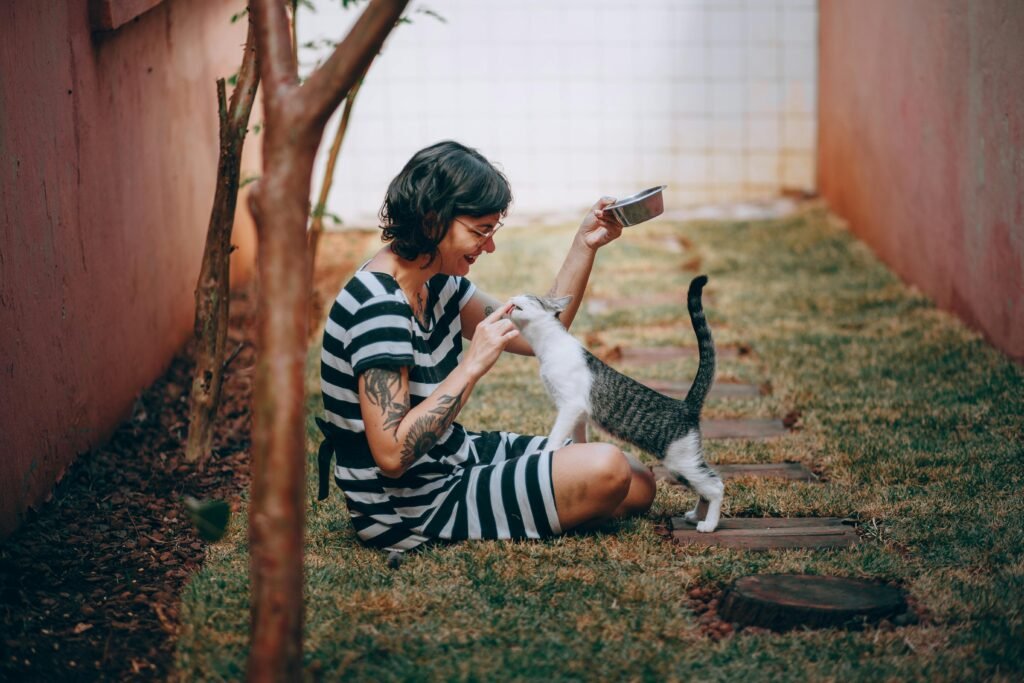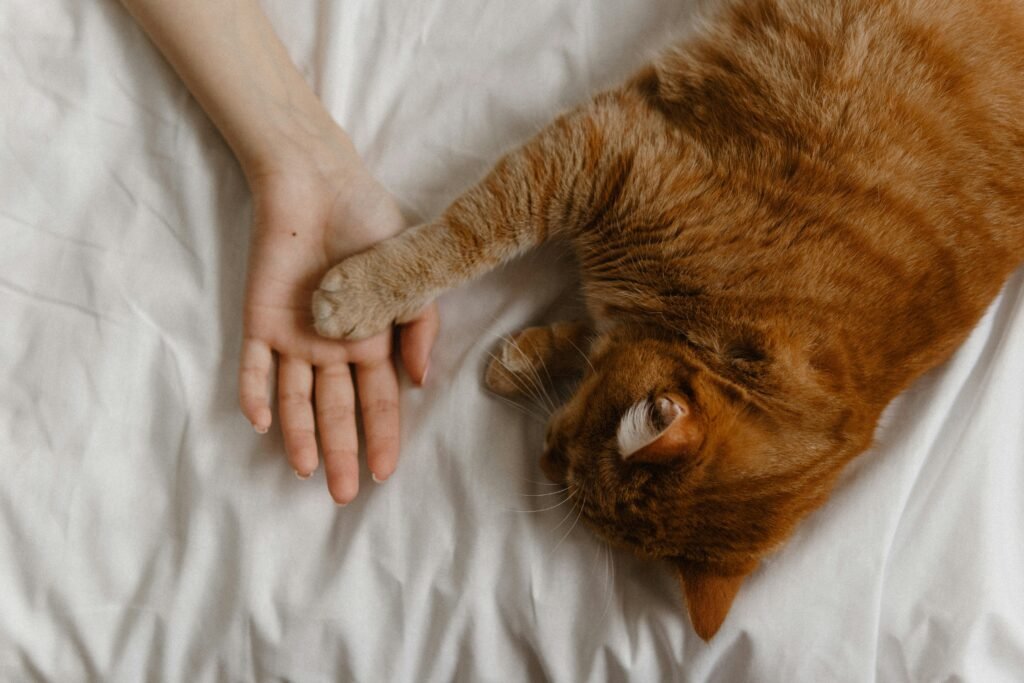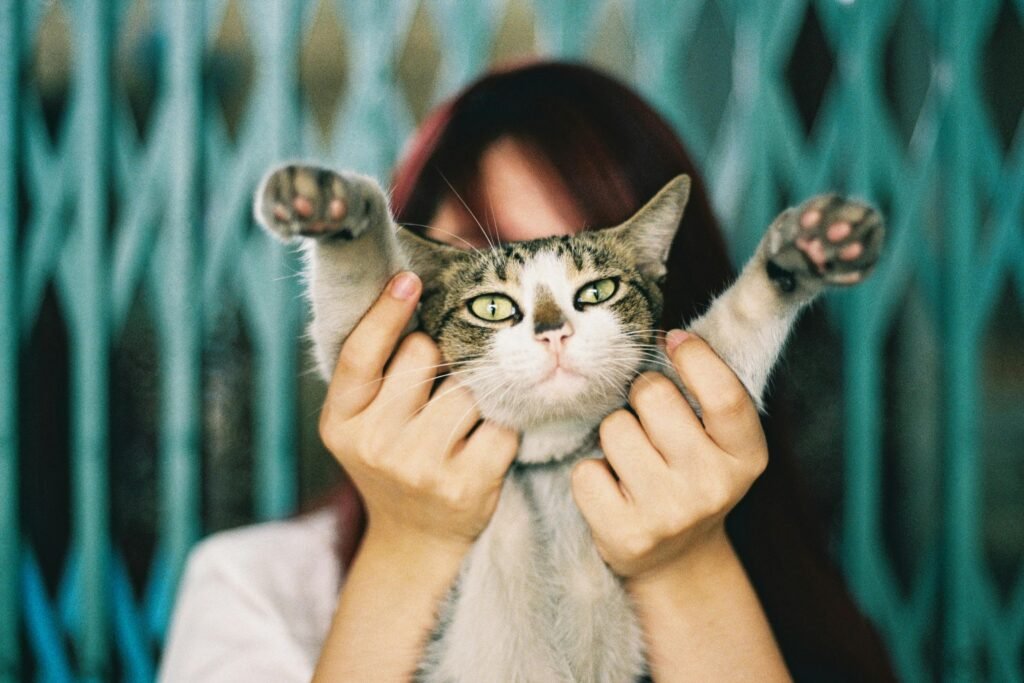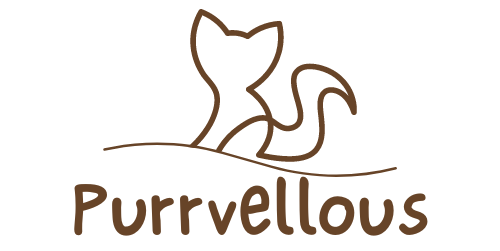
Introduction to Holistic Care for Cats
Our pets are very important to us, and we want them to be healthy throughout their lives. Cats are different from other pets. They have unique eating habits, and their needs are not the same as dogs, rabbits, etc. Because of this reason, they need special attention & care. Cats also don’t easily eat food that isn’t part of their usual diet. When it comes to natural care, cats are picky and won’t be easily fooled into eating something new. This is where it becomes challenging for cat owners to introduce holistic care to cats.
So, what is holistic care for cats? It’s a way of caring for our cats’ health through natural approaches. It includes taking care of their physical, mental, and emotional well-being by offering them wholesome, nutrient-rich diets and holistic environments. Holistic care also refers to combining both regular vet treatments and other natural therapies to help our cats stay well in the long run. Let’s learn how holistic care can help our cats stay healthy.
Understanding Holistic Cat Care
As a cat owner, our primary concerns always revolve around the health and well-being of our feline friends. Now we can only ensure true well-being in our cats if they are kept away from unnecessary chemicals and processed food. So, when we talk about holistic cat care, we focus on treating the whole cat’s body, mind, and spirit rather than just addressing specific symptoms or illnesses. This approach includes many processes which include a combination of veterinary as well as natural remedies.
What is Holistic Cat Care?
Holistic cat care refers to an integrative approach to feline health that considers the entire well-being of our cats. In holistic cat care our cats get overall support. Not only does physical illness have many ways of healing but it has provided many approaches to mental health as well.
Learn more here: Introduction to Holistic Cat Care.
Benefits of Holistic Health Care for Cats
Our cats are beautiful companions who bring happiness and warmth to our lives. Ensuring the health and wellness of our feline is a primary responsibility for us. One of the key benefits of holistic cat care is disease prevention. We the cat owners want nothing but to prevent our cats from the illnesses they may face in their lifetime. That goal can be achieved by simply emphasizing a balanced diet. If we feed our cats with natural organic food or homemade treats that are free from chemicals, the chances of them suffering from severe diseases can reduce for the most part.
Secondly, Holistic care also includes natural remedies, like using herbs or homeopathy approaches, to manage health issues in our cats. That reduces the risk of adverse reactions to chemical treatments on their health. Holistic health care for cats effectively minimizes the side effects of conventional medications on our cats. In the long run, it makes our cats more immune to diseases.
Lastly, introduce holistic care for cats as it incorporates regular exercise and stress reduction methods. It ensures that our cats are regularly exercising which helps them physically and mentally, both ways. Regular exercise for cats can also remove anxiety in them promoting their all over healthy growth and development. Even gentle therapies such as acupuncture or regular massage can help reduce stress and anxiety in our cats, which can prevent behavioral issues and stress-related illnesses.
So we can roughly conclude that holistic care for cats can strengthen the immune system of the cats. And makes our cats more resilient to illnesses. Nutritional support through natural, species-appropriate diets can improve digestion, energy levels, and coat health, contributing to a longer, healthier life for our puff balls.
Preparing to Transition to Holistic Care
Transitioning to holistic care for our cats starts with a vivid understanding of their needs and a gradual shift in practices. We can begin by consulting a holistic veterinarian. Who can guide us in adjusting our cat’s diet to include natural, whole foods, and consider incorporating gentle therapies like acupuncture or herbal supplements. It is important to know the process well since the dosages and particular herbs have to be set for the specific illness.
Learn more here: Is natural pet care important?
Assessing Your Cat’s Needs
Assessing the needs of our cats is the first step to transitioning to holistic care. To do that, we have to observe our cat’s daily habits. A right assessment of the daily habits of the cat can provide us with information that we need to incorporate some new patterns. This evaluation allows us to tailor a wellness plan that addresses the unique physical, mental, and emotional requirements of our cats. The habits include their eating patterns, energy levels, and behavior. Besides, we have to take note of the changes in weight loss or gain, lethargy, or alterations in appetite, which could indicate underlying health issues that our cats may have. Here’s how to systematically assess our cat’s needs:
- Physical Health Assessment: We can simply start by assessing the physical health of our cats. This includes various majors such as dental health, we need to ensure that our cats do not have any abnormality in their gums or teeth or difficulty having the food. Weight and body condition, are the second most important parts. We have to monitor the weight loss or gain constantly. Next is the coat and skin, a healthy coat should be shiny and smooth, without bald patches or excessive shedding. We have to monitor if there are signs of parasites since they cause much damage. Last but not least, vitality and mobility, we need to observe our cat’s energy levels and mobility. Cats that are lethargic or have difficulty jumping, climbing, or walking might be experiencing joint pain or other health issues.
- Dietary Needs: We need to make notes of the current diet plans. We need to look for high-quality protein sources and avoid packaged food. Secondly, we should note how often and how much our cats eat. As well as their appetite levels. Sudden changes in appetite can be a sign of underlying health issues for our cats. Lastly, we must ensure our cats are drinking enough water and staying hydrated.
- Mental and Emotional Well-Being: As we talk about holistic care, we have to consider mental and emotional well-being. Our cats are sensitive animals, therefore, the environment around them can easily affect them. A serious stressful environment can cause anxiety in them. Therefore, it is wise to maintain a positive environment around them, and continuously maintain that environment. We should assess how our cat reacts to different situations, such as changes in the household, new pets, or visitors. There are many signs of stress including excessive grooming, hiding, aggression, or changes in eating and litter box habits.
- Behavioral Patterns: Understanding the behavior of our cats is key to identifying any underlying issues. Litter Box Habits and Sleeping Patterns are some examples that we have to keep a note of. Lastly, we must monitor how active our cat is throughout the day. Our cats that suddenly become more sedentary or overly active might be signaling a health issue.
Consult with a Holistic Veterinarian
Finally, we must consult with a veterinarian for holistic care since it requires professional guidance. They can perform a thorough health examination. They can run necessary tests on our puff balls, and help us understand our cat’s specific needs overall. A holistic vet can also guide us in creating a balanced diet. Only a vet can recommend natural supplements and dosages, as we all know how crucial that part is.
Similarly, they can also suggest alternative therapies for anxiety or depression that support our cat’s overall well-being. Therefore, we must consult a vet before we start a new herb or diet for our cats and contact them if there is something wrong.

Step-by-Step Guide to Introducing Holistic Care
Introducing holistic care to our cats involves gradually incorporating natural diets, alternative therapies, and environmental enrichment into their routine. We can start with small, manageable changes. For example, we can adjust their diet to include whole foods, then slowly introduce supplements. We can incorporate some stress-reducing practices and regular vet consultations for a well-rounded approach to wellness.
There are a few steps discussed below, which we can follow to introduce holistic care:
Step 1: Gradual Diet Changes
The first step in introducing holistic care is to include changes in food habits. We can introduce more natural and organic food into their diet. If we are transitioning our cat to a holistic diet, we must do that gradually to ensure that our cats adjust well. And we must avoid digestive upset.
We can start by slowly mixing small amounts of the new holistic food with our cat’s current diet. You can begin with a ratio of about 75% old food to 25% new food for the first few days. Then over the next week or two, we can gradually increase the proportion of new food while decreasing the old. Then we must be moving towards a 50/50 mix, and eventually reaching 100% of the new diet. Choose a high-quality holistic food that aligns with our cat’s natural dietary needs. Focus on real, whole ingredients like fresh meat, vegetables, and minimal grains or fillers.
We must pay attention to our cat’s reaction during this process. We have to constantly monitor their stool for any signs of digestive distress, such as diarrhea or constipation, and adjust the transition speed if needed. Some cats may require a slower change, especially if they are older or have a sensitive stomach. Therefore, we have to consult a vet before we start anything. Patience and close observation are key to a successful transition. We must ensure our cat remains healthy and comfortable throughout the process.
Step 2: Natural Supplements
Introducing natural supplements to our cats’ diet can be helpful for them. It will enhance their overall health and well-being when transitioning to holistic care.
Safe and commonly used supplements include:
- Omega-3 Fatty Acids: Omega-3 Fatty Acids are found in fish oil. These Fatty Acids can support a healthy coat, skin, and joints for our cats. These acids also promote the heart and brain health of the cats. We can start with a small dose and gradually increase it. However, we must monitor the cats for any signs of gastrointestinal upset. Some common natural sources are:
- Fish oil (especially from salmon, sardines, and anchovies).
- Flaxseed oil.
- Chia seeds.
- Krill oil.
- Probiotics: We all know that probiotic bacteria help our cats in many ways. It would be beneficial for our cats if we could add this probiotic to their diets. These beneficial bacteria can help in digestion. They can support immune function and help maintain a balanced gut microbiome. We should look for cat-specific probiotics and introduce them slowly to the cat. Especially, if our cat has a sensitive stomach these bacteria can help. Some common natural sources are:
- Plain yogurt (unsweetened, with live cultures).
- Kefir (unsweetened, with live cultures).
- Fermented vegetables (like sauerkraut, in small amounts).
- Pumpkin (fiber-rich, supports gut health).
- Bone broth (supports gut lining, with some natural probiotics).
- Glucosamine and Chondroitin: Now if we talk about glucosamine and chondroitin, these are essential for the joint health of our cats. Particularly, in older cats or those with arthritis glucosamine and chondroitin can be proven very useful. They help maintain cartilage and improve joint function in our cats. We can gradually introduce some supplements of glucosamine and chondroitin in the diet. However, we must administer according to our vet’s recommendations. Natural sources of glucosamine and chondroitin for cats include:
1. Green-lipped mussels
2. Chicken cartilage
3. Bone broth
4. Beef trachea
Step 3: Integrating Physical Activities
As we know physical activities are a prominent part of the daily life of any living being. Our cats are no exception. Integrating physical activities into our cat’s routine promotes holistic health. We can provide a healthy and happy life to our beloved puff balls by enhancing physical fitness, mental stimulation, and emotional well-being. Some engaging activities for our cats include:
- Interactive Play: Interactive play is crucial for our cat’s physical and mental health. We can use toys like feather wands, laser pointers, or small balls, to mimic hunting behavior which taps into their natural predatory instincts. This type of play provides physical exercise for the cat. It can help prevent obesity and reduce boredom. Many behavioral issues in our cats can be tackled only by practicing these small plays. Lastly, regular interactive play sessions also strengthen the bond between you and your cat.
- Climbing and Scratching: Our cats are natural climbers and scratchers. We can provide cat trees, shelves, and scratching posts to encourage natural behaviors. Climbing helps build muscle tone and keeps our cat agile. On the other hand, scratching helps maintain their claws and mark their territory. These activities are essential for physical health and stress relief for our fenial friends.
- Puzzle Toys: As we know puzzle toys are excellent for mental stimulation. They can stimulate our cat’s mind with food puzzles that challenge them to work for treats. Puzzle toys can help prevent boredom and reduce anxiety in our cats. Besides, they can encourage slow, mindful eating, especially in cats that tend to eat too quickly.
- Outdoor Exploration: If safe, we should allow supervised outdoor time or use a cat harness for walks. This can be highly enriching and reduce indoor stress for our cats. It also provides physical exercise and mental stimulation, promoting overall well-being.
These activities help maintain a healthy weight, reduce stress, and satisfy our cat’s instincts.
Step 4: Environmental Enrichment
Emphasizing on environmental enrichment that creates a stress-free living environment for our cats is key to their holistic health. Start by providing a variety of spaces, like cozy hideaways, perches, and windowsills for observing the outdoors. Ensure their environment is enriched with toys, scratching posts, and interactive activities to keep our cats mentally stimulated. We can also use calming aids like pheromone diffusers to reduce stress. Besides we can maintain a consistent routine to provide a sense of security to them. We have to keep their litter box clean and accessible. Lastly, we may introduce changes, like new furniture or pets, gradually to minimize anxiety. A calm, enriched environment supports both the physical and emotional well-being of our cats.
Additional Holistic Practices
We can incorporate additional holistic practices like acupuncture, massage, Herbal Remedies, and chiropractic care. They can further support our cat’s overall well-being. These gentle therapies can help alleviate pain, reduce stress, and enhance relaxation. These will be contributing to a balanced and healthy life for our little pet.
Herbal Remedies
Herbal remedies can offer natural support for various aspects of our cat’s health. They often serve as complementary treatments to conventional care, promoting a holistic approach to health. As we all know it is very safe to use herbal remedies for our cats since it does not leave any side effects in them. However, before using any herbal remedies We must consult a veterinarian. Their guidance is crucial.
Here are five commonly used herbs and their benefits:
- Catnip (Nepeta cataria): Catnip is commonly known for its stimulating effects on cats. Catnip can also be calming when ingested. It can help reduce anxiety and encourage relaxation in our cats. A helpful herb indeed.
- Chamomile (Matricaria chamomilla): Chamomile is a gentle herb. It can soothe digestive issues, such as indigestion or mild stomach upset. It also has mild sedative properties, making it useful for calming nervous cats or aiding sleep. We can gently start using this herb for our cat friends.
- Valerian Root (Valeriana officinalis): Valerian is often used as a natural sedative for cats. It can help calm anxious or hyperactive cats. Besides, it may be beneficial during stressful events like vet visits or thunderstorms.
- Echinacea (Echinacea purpurea): Echinacea is known for its immune-boosting properties. It can help support the immune system. It is a good choice for cats recovering from infections or in need of immune support during times of illness or stress.
- Milk Thistle (Silybum marianum): Milk thistle is commonly used to support liver health. It can help detoxify the liver. Besides, it is often recommended for cats with liver conditions or those on long-term medications.
Alternative Therapies
Now let’s talk about alternative therapies such as acupuncture and chiropractic care. They can offer holistic approaches to improving our cat’s health and well-being. Acupuncture involves inserting fine needles into specific points on the body to stimulate energy flow. Besides, it promotes the overall healing. It can help manage pain and alleviate arthritis. Lastly, it can support overall wellness by balancing the body’s energy.
On the other hand, Chiropractic care focuses on adjusting the spine and other joints in our cats. Chiropractic care can ensure proper alignment and function of the joints. This therapy can address issues related to mobility, and reducing pain in our pets. Besides, Chiropractic care can improve the nerve function of our cats. It is particularly beneficial for cats with musculoskeletal problems or those recovering from injuries.
Both therapies can complement traditional treatments. They offer additional benefits for our cats, such as pain relief and enhanced recovery. We must always consult with a veterinarian before we start any of these. Only an experienced veterinarian in these therapies can determine the best approach for our cat’s specific needs.

Monitoring Your Cat’s Progress
We have to regularly monitor our cat’s progress. It can be done by tracking changes in their behavior, appetite, and overall health. We have to keep detailed notes and consult with our veterinarian to adjust their holistic care plan for our cats as needed for optimal well-being. Some processes are discussed below:
What to Watch For
When we are transitioning our cat to holistic care, it’s important to observe both signs of positive impact and potential adjustment issues.
Signs of Positive Impact:
Reduced Anxiety: Enhanced relaxation and reduced stress behaviors, such as hiding or excessive grooming, indicate effective stress management.
Improved Energy Levels: A noticeable increase in activity and playfulness can indicate that our cat is feeling better and more vibrant.
Better Coat Condition: A shinier, healthier coat and reduced shedding or skin issues often reflect improved nutrition and overall health.
Stable Digestion: Consistent, healthy stool and regular appetite suggest that dietary changes are well-tolerated and beneficial.
Adjustment Issues:
- Digestive Upset: Diarrhea, vomiting, or changes in stool consistency can signal that the new diet or supplements don’t agree with our cat. We must adjust the transition pace or consult with our vet.
- Behavioral Changes: Increased aggression, hiding, or excessive vocalization may indicate stress or discomfort. We must ensure the environment is stress-free and gradually introduce changes.
- Allergic Reactions: we need to constantly watch for signs of allergies. Examples are itching or swelling, which may necessitate changing supplements or ingredients.
Regular monitoring and communication with our veterinarian will help ensure a smooth transition and optimal benefits from holistic care.
When to Consult Your Vet
You must consult your vet regularly to ensure our cat’s holistic care plan is effective and safe. You should schedule follow-up appointments to monitor your cat’s response to dietary changes, supplements, and alternative therapies. If you notice any signs of discomfort or health issues, seek veterinary advice promptly. Regular check-ins help adjust the care plan as needed and address any concerns that arise. Ongoing consultations ensure that holistic treatments complement traditional care. It also provides the best possible outcome for your cat’s overall health and well-being.
Common Challenges and Solutions
Introducing new holistic practices gradually and watching your cat’s reaction carefully are two ways to deal with reluctance to change. You can seek advice from dependable pet health forums regarding the same. Besides, you can also speak with a respectable veterinarian who specializes in holistic care to locate trustworthy holistic resources. That will guarantee you receive safe and efficient remedies.
Dealing with Resistance to Change
Resistance to Change is very common in cats, since they are very sensitive animal. Handling a cat that resists changes in diet or routine requires patience and gradual adjustments. Therefore, start by slowly mixing the new food with the old, increasing the new food’s proportion over time. Besides, we can introduce changes incrementally, such as adding new toys or altering the routine in small steps. You can use positive reinforcement, like treats and praise, to encourage acceptance. We have to ensure a stress-free environment and maintain consistency to help our cat adjust. If resistance persists, consult your vet for additional strategies or alternative approaches. It will make the transition smoother and more acceptable for your cat.
Finding Reliable Holistic Resources
If you want to find reliable holistic resources, then you must start by consulting a veterinarian experienced in holistic care. The veterinarian can suggest recommendations according to our cat’s needs.
Secondly, you may also look for products and services from reputable brands with transparent ingredient lists and positive reviews from other pet owners. You can verify certifications and endorsements from recognized holistic health organizations.
We may also seek out holistic pet care communities online for personal experiences and advice. Additionally, we must ensure that any products or services are specifically formulated or designed for cats to address their unique needs. We should prioritize quality and safety. That will be possible by selecting resources that are backed by research and professional guidance.
Conclusion
Transitioning our cat to holistic care is a thoughtful and rewarding journey. It prioritizes their overall well-being. It sets a happy life for our cats, by following the outlined steps and gradually introducing a holistic diet. We can also incorporate natural supplements, integrate physical activities, and create an enriched environment for a healthier and happier life for our cat. We must stay in close contact with a holistic veterinarian to ensure that the care plan remains effective and safe.
By incorporating holistic care for cats we can provide our cats with the best chance for long-term wellness. It will allow them to live a vibrant and fulfilling life.
